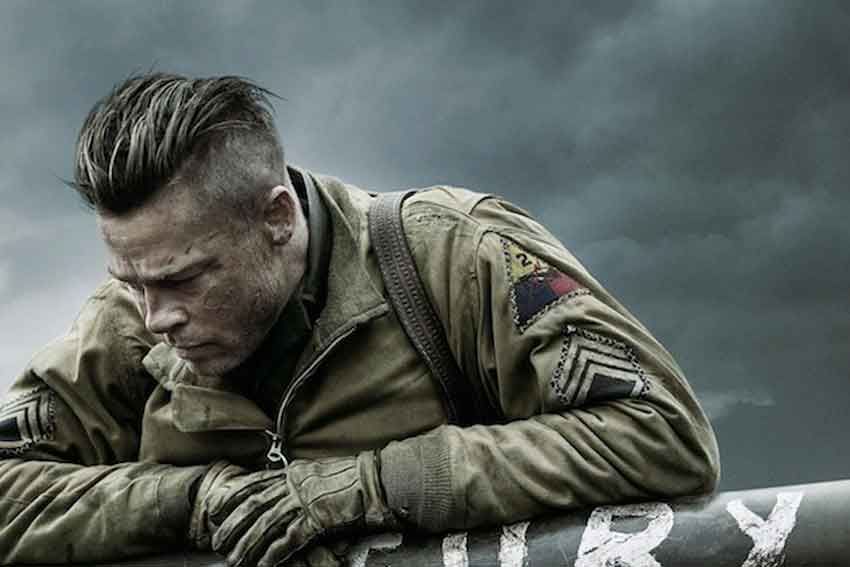By Jeremy Hannaford (Contributor) – Email
Print Edition: October 22, 2014

Gruesome violence is common in war films, but Fury shows a seldom-portrayed aspect of the Second World War: a lack of empathy among soldiers.
The film opens with text explaining just how dangerous it was to be in the armoured division of the American forces, establishing its dark, gloomy tone within the opening minutes. Set in April 1945, the film also shows the desperate, suicidal attempts of the German forces to prevail, even after the war has been lost.
Director David Ayer truly commits to pulling the audience into this living nightmare during the first major battle. The sound of howitzer shots zinging past or slamming off tank armour is terrifying, and the tank crew’s sense of fear is genuine.
The battles are extremely well-constructed and are complemented with modern film technology, building a great sense of immersion. The intensity that Ayer brought to End of Watch increases tenfold for this film. With its horrific imagery, Fury will be remembered even if you feel ill thinking about it.
But it’s the characters in Brad Pitt’s crew who break the norm of most war films. In the opening segment, they deal with the death of a crew member — but instead of grieving together, it fuels their rage against one another. This diversion from the normal “solid bunch of good guys” is disheartening to watch. No one talks about their homes or their families. They only talk about the other horrors they have seen. These characters have all lost part of their humanity. The only remaining piece is the will to survive. While it appears that they are hazing or simply bullying Logan Lerman’s new recruit character, they’re bringing him to a harsh realization of the world he has entered, voluntarily or not.
Fury removes, for the most part, the Hollywood notion of justice and glory and heroes. There are no heroes in this film — only men who are willing to do anything to survive. The acting in this film solidifies this notion tremendously. None of the characters truly have likeable qualities. These men aren’t happy-go-lucky marines. They are broken, they are scared, and they don’t know when it will be their last day.
The pacing of the film is also top-notch, as it goes through several levels of hell before the final climax. With every minor triumph come terrible losses as Brad Pitt pushes his crew through horror after horror. When the film isn’t producing amazing war scenes, it is a genuine character study of desperate, disheartened men.
The film holds its image until the final battle, when it turns into something out of The Dirty Dozen. Ayer unfortunately returns to Hollywood aspects as Pitt’s crew proceed to take on wave after wave of Germans in the final battle. What could have been the Saving Private Ryan of this decade turned into the ending from The Wild Bunch. While there is a message conveyed following the battle, it isn’t worth the loss of the previous vision.
But while its ending may be lacklustre, Fury provides amazing set pieces, some fantastic war sequences, and some modern-day storytelling of an age already decades past. Ayer has woven a tale in mud, blood and gore that will stand out as a solid war film.


